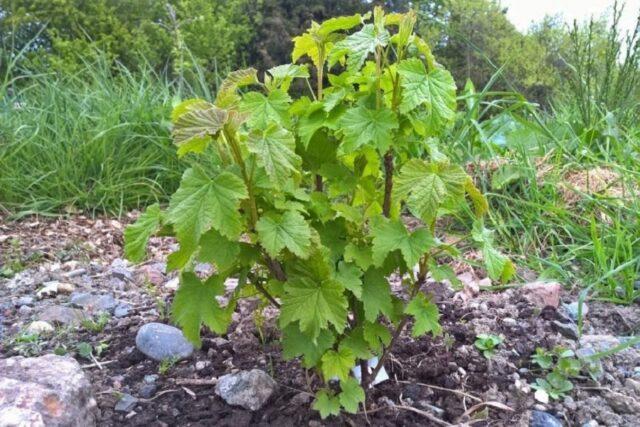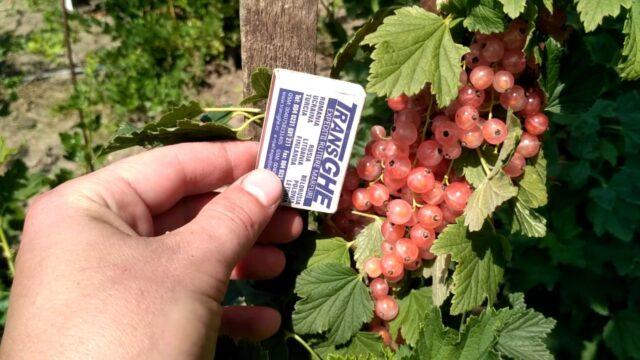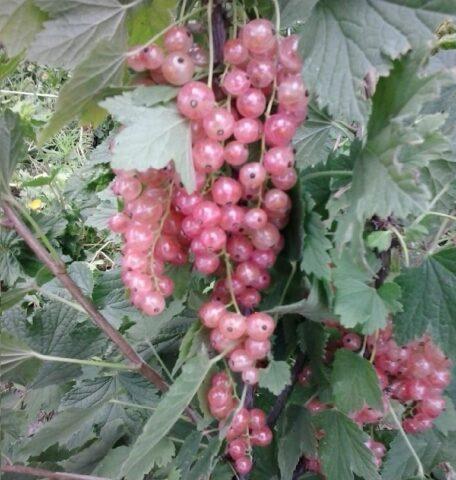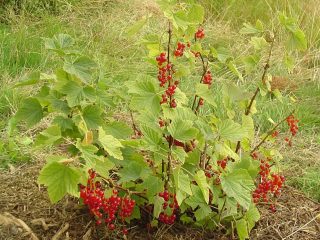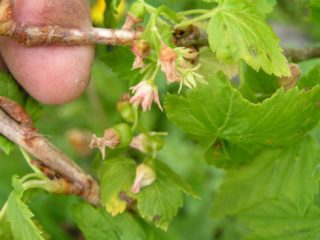Content
Currant Lyubava takes a worthy place among other varieties. Gardeners are presented under this name not only black, but also a rare, pink representative of this berry. It was noted that the second variant of the bush plant has not only a beautiful pink-amber color, but also a pleasant sweet taste.
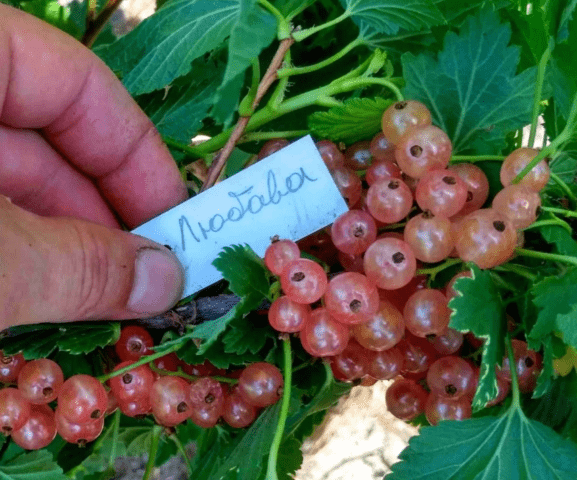
Despite the color difference between black and pink currants Lyubava, berries of both types are considered relatively large
Breeding history
Black currant Lyubava was obtained at the Saratov experimental gardening station. This berry was the result of crossing the Chudesnitsa and Rtischevskaya varieties. Since 1983, it has been listed on the state variety testing. Zoned variety for cultivation in the Lower Volga region.
Pink currant Lyubava is a high-yielding hybrid of the white and red varieties of this berry, Fertodi pyros, obtained by free pollination. It was brought out in the Lviv branch of IS UAAN. The authors of the variety are Z. A. Shestopal, G.S. Shestopal. It is recommended for cultivation in the southern regions, in the Urals and in the Moscow region.
Description of varieties of pink and black currant Lyubava
According to the description and reviews of gardeners, the varieties of black and pink currants Lyubava are high-yielding. With proper care, the plant pleases not only with a large number of fruits, but also with pleasant taste.
In appearance, currant with black berry is a medium-sized bush, not exceeding 1.5 m in height. Moderate branching. The shoots are straight, strong, but can bend under the weight of the berries. Leaves with a typical aroma, light green hue. The brushes are long, rather large berries are formed on them, the mass of which can reach up to 1.5 g. The skin of the fruit is thin, dull, with a bloom. In technical maturity, they are black. The color of the pulp is light green, the seeds are medium-sized. The separation of the berries is dry, and, if they are not overripe, then they do not choke during collection. The taste is pleasant, sweet, with subtle sourness.
Bushes of pink currant variety Lyubava are also of medium size, rarely exceeding 1.5 m. Very compact, but quite branched, requiring timely pruning of the shoots. Shoots are erect, strong and flexible. The leaf plates are medium-sized, five-lobed, dark green in color. Clusters are long, on which from 14 to 18 large berries weighing up to 1 g are formed. Fruits are all uniform, rounded. Their skin is thin and transparent, but at the same time dense, not cracking. The color is pink-beige, the aroma is typical for currants. The berries are very juicy, with small seeds, sweet to taste without noticeable sourness.
Characteristics
Due to the excellent characteristics of the varieties of black and pink currants Lyubava, these garden plants are considered the most optimal for growing in small areas. After all, the compactness of the bushes and the long brushes on which large berries are formed allow you to achieve maximum yield in a limited space.
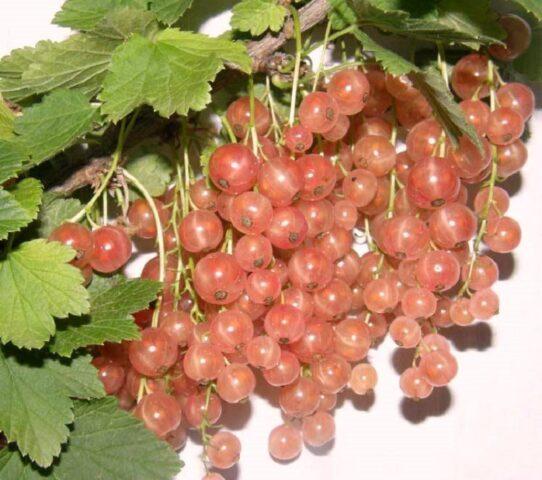
Currant Lyubava is considered one of the most unpretentious in cultivation.
Drought tolerance
Pink and black currants Lyubava are considered varieties that are not afraid of dry weather. But in order for the berry to be large, during drought, the plants should be provided with good watering. Lack of moisture can not only affect the size of the fruit, but also the yield.
How many degrees of frost can pink and black currant Lyubava withstand?
In addition to resistance to drought, the varieties of pink and black currant Lyubava are noted for increased resistance to frost. Both types of this garden plant are able to withstand temperatures up to - 30 ° C without shelter. Naturally, the bushes will calmly survive the winter only if they are properly prepared. It is recommended to carry out sanitary pruning, watering and feeding in the autumn period, which will allow the plant to gain strength.
Pollination, flowering period and ripening times
Both varieties of Lyubava are self-fertile, so the presence of other currant bushes nearby is not required to obtain a stable harvest. But still, gardeners recommend planting several varieties of plants at once to increase the number of berries and their taste.
In terms of ripening, pink and black currants Lyubava differ slightly. The first type is more classified as mid-season, since the berries reach technical maturity in mid-July. But blackcurrant nevertheless belongs more to the late varieties, since berry picking should begin in early to mid-August.
Productivity and fruiting, keeping quality of berries
The productivity of black and pink currant Lyubava is marked as high. Indeed, with good care from one bush, you can collect up to 15 kg of high-quality berries. If we talk about an industrial scale, then from 1 hectare you can get about 160-200 centners. Fruiting of both varieties is annual and stable.
After picking, the berries are not stored for long, since they have poor keeping quality. At low temperatures, pink currants can lie for up to two days, but black currants begin to crumple and deteriorate.
Disease and pest resistance
The currant variety Lyubava has good immunity. These garden plants have an increased resistance to many fungal diseases typical of the culture, in particular, to powdery mildew, anthracnose, septoria. It is also worth noting the low susceptibility to spider mites.
Advantages and disadvantages
The currant variety Lyubava, independently with black or pink berries, according to many gardeners, has a large number of advantages. The plant is unpretentious and gives a stable harvest.
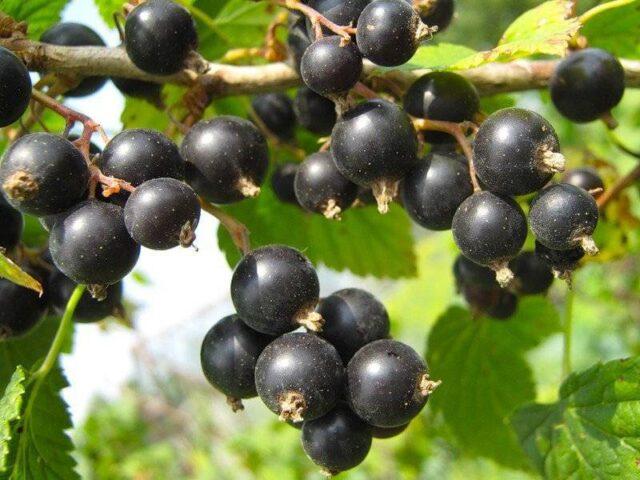
One of the advantages of the Lyubava currant variety is that the buds and inflorescences are not damaged when the temperature drops sharply in spring.
Pros:
- high productivity;
- unpretentious cultivation;
- ripening of fruits is amicable, and they can remain on the hand for a long time without crumbling;
- large, uniform berries, with excellent commercial qualities and a good sweet taste;
- versatility of use, the berry is suitable for fresh consumption and for processing (making jam, compote, fruit drinks and the like);
- frost and drought resistance;
- increased immunity to diseases and pests.
Minuses:
- small size of the bushes;
- the Lyubava variety with a pink berry requires timely pruning, since thickened shoots can affect productivity;
- lack of distance can affect the size of the berries.
Features of planting and care
Pink and black currant Lyubava is considered an unpretentious plant, so planting a crop usually does not cause problems.
This garden plant gives a stable yield when grown in sunny areas, protected from through winds. It is recommended to plant bushes on loams with neutral or slightly acidic soil.
Planting currants is best done in the first half of autumn, before the onset of winter, the plant will have time to take root well and get stronger.
In pre-dug holes, seedlings are planted in such a way that the root collar is deepened by 5-7 cm. Then they are covered with soil, compacted around it and watered abundantly. At the end of all planting manipulations, the shoots are trimmed to three buds. You should also mulch the soil around the trunk.
After planting and further, the plant needs moisture. During the dry period, currants should be watered at least once every ten days, using up to 50 liters of water. After that, you should loosen the soil.
Organic fertilizers and fertilizers containing nitrogen, potassium and phosphorus are used as top dressing for the crop. They should be brought in four times per season: in spring, during flowering and laying of berries, and in autumn, after harvesting.
It is required to cut Lyubava currants at least twice a season: in spring, cutting off frozen and damaged shoots, and in autumn, removing shoots. After carrying out such treatments, you need to coat the cuts with garden varnish.
In order to prevent infection, currants are treated with boiling water in spring. If infected leaves are found, they should be removed without fail. If harmful insects have been seen on the bush, the plant must be treated with insecticides.
Conclusion
The currant Lyubava, both pink and black, can rightfully be called one of the best. The yield of both types is high, the berries are large and pleasant to the taste. And most importantly, they are universal, which makes it possible to enjoy not only fresh fruits, but also prepare useful preservation for the winter.
Reviews with a photo about currant varieties Lyubava
